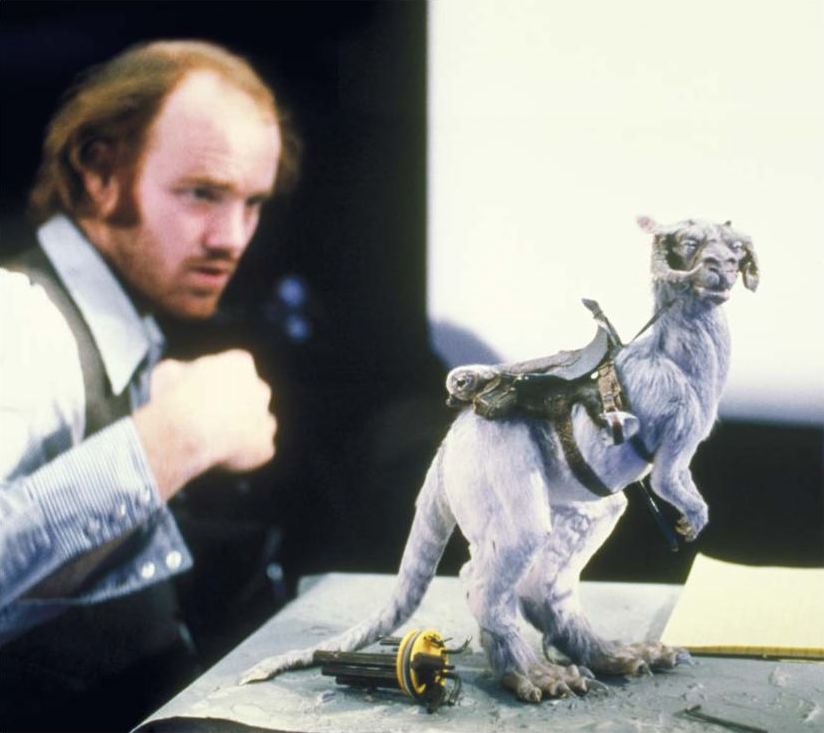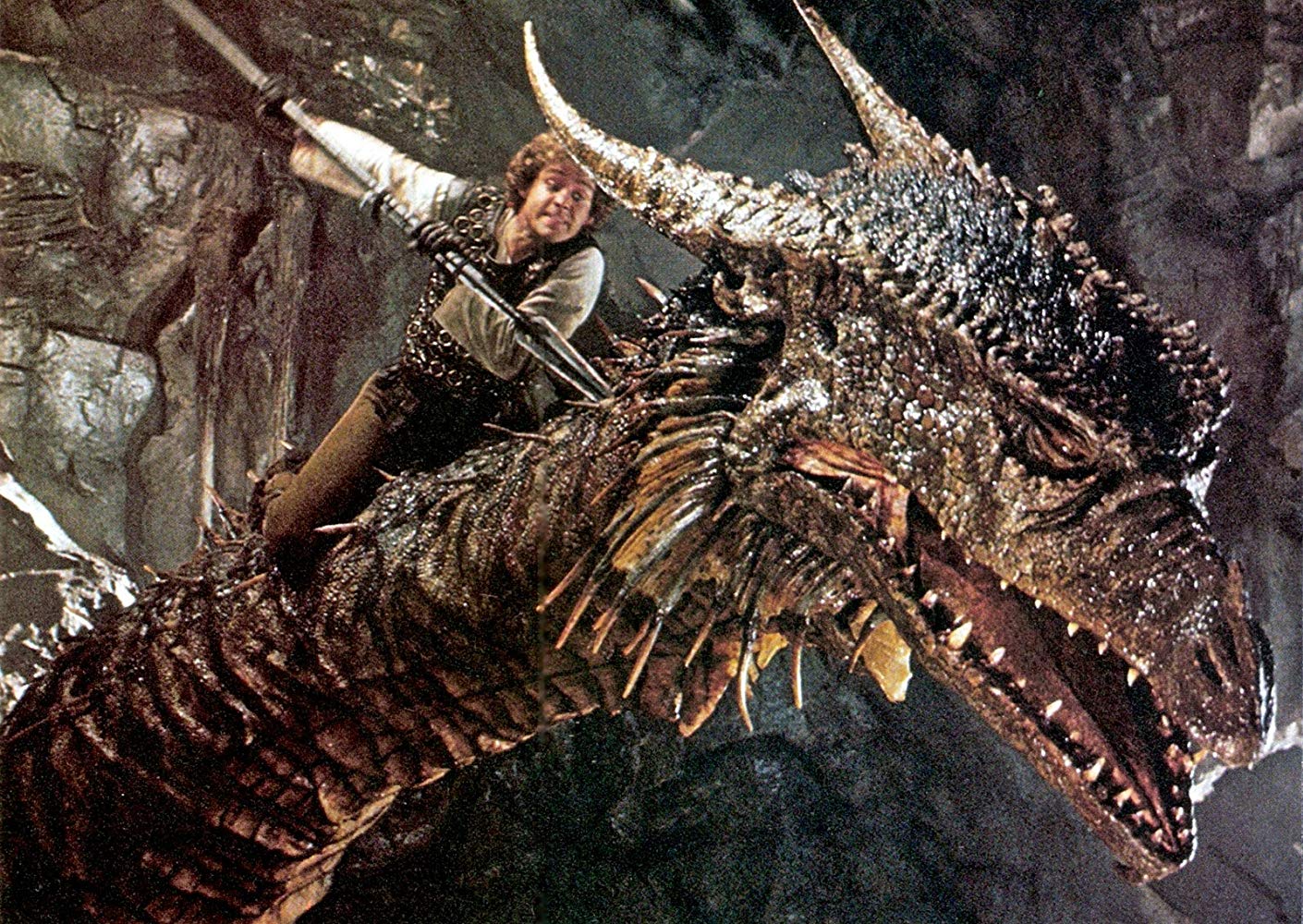5 Fascinating Facts About Go Motion Animation
Go motion animation, a term that might sound familiar to some yet remain unexplored by many, holds a unique place in the animation world.
As an animator, understanding various animation techniques is crucial, and go motion animation is no exception. It's a blend of artistic craftsmanship and technological innovation, offering a distinctive approach to bringing animated scenes to life.

Cover GIF by Star Wars via GIPHY
This blog post dives into five fascinating facts about go motion animation, shedding light on its origins, techniques, and lasting impact on the industry.
Whether you're a seasoned animator or just starting, these insights will enrich your appreciation and knowledge of this remarkable animation style.
Fact 1: Originated as an Advanced Form of Stop Motion
Go motion animation began as a revolutionary step forward from the traditional stop motion technique.
While stop motion is revered for its classic charm, it often struggled with one significant limitation: the lack of realistic motion blur in fast-moving objects.
Go motion animation addressed this by introducing controlled motion during frame captures, leading to a more lifelike and dynamic representation of movement.

Image via Star Wars Fandom
This advancement was not just a technical leap but also an artistic one. By integrating motion control systems with the models, animators could create sequences that were fluid and closer to how objects move in the real world.
The resulting animation had a natural flow, setting go motion apart from the more static and sometimes jerky appearance of traditional stop motion.
For animators, mastering go motion meant unlocking a new realm of possibilities, where their creations could move more believably and expressively.
Fact 2: Developed by Animation Industry Innovators
The development of go motion animation is credited to a few visionary individuals in the animation industry such as Ladislas Starevich, and most notably Phil Tippett, an American visual effects supervisor and producer.
Tippett's pioneering work in the field significantly elevated the quality and realism of animated sequences in several high-profile films.
Phil Tippett's expertise and innovative mindset led to the application of go motion techniques in major cinematic projects.
Video via YouTube
One of the most iconic examples is the 'Star Wars' series, where go motion was used to bring to life various creatures and scenes with a previously unseen level of realism. This work not only showcased the potential of go motion animation but also set a new standard in the industry.
These early applications of go motion proved that animation could go beyond the limits of traditional techniques, offering a new way to create compelling and lifelike scenes.
Animators today continue to draw inspiration from these pioneering efforts, applying the principles of go motion to blend creativity with realism in their projects.
Fact 3: A Unique Blend of Practical Models and Digital Techniques
Go motion animation stands out for its unique combination of practical, physical models and sophisticated digital enhancements. This hybrid approach allows for depth and texture in animation that is difficult to achieve with purely digital methods.
The process begins with the creation of detailed models, often sculpted and articulated with the utmost precision. These models are then positioned and photographed frame by frame. What sets go motion apart is the addition of controlled, subtle movements during each frame's capture.

Image via IMDb
Further digital enhancements can be applied in post-production, where animators refine the images, add effects, or integrate the models into larger digital landscapes.
This combination of tactile artistry and digital technology makes go motion animation a particularly versatile tool in an animator's repertoire. It bridges the gap between traditional stop motion's tangible charm and the limitless possibilities of digital animation.
Fact 4: Continuous Evolution with Technological Advances
Go motion animation has not only benefited from technological advancements; it has evolved with them.
Over the years, this technique has been refined and enhanced, embracing the latest in technology to push the boundaries of what can be achieved in animation.
Initially, go motion relied heavily on manual techniques and mechanical systems to create movement. However, with the advent of computer-aided design (CAD) and computer-generated imagery (CGI), the process has become more precise and efficient.
This CGI stop motion short film by TheCGBros demonstrates just that:
Video via YouTube
Modern go motion now often incorporates sophisticated software that allows for intricate movement patterns, better control, and more detailed planning of each frame.
These technological enhancements have made go motion animation more accessible to animators.
With software capable of simulating complex motion paths and integrating them seamlessly with the physical models, animators can achieve effects that were once impossible or extremely time-consuming.
This fusion of technology and traditional techniques ensures that go motion remains a relevant and powerful tool in the animator's toolkit, even in an era dominated by digital animation.
Fact 5: A Lasting Influence on Contemporary Animation
Despite the rise of fully digital animation techniques, go motion animation has left an indelible mark on the industry.
Its influence extends beyond its own technical realm, inspiring animators and filmmakers to strive for a more lifelike and nuanced portrayal in animated sequences.
Go motion's legacy is evident in the way current animation blends practical effects with digital enhancements.

Image via Moria
The technique has taught animators the value of physicality in animation — how the tangible elements can bring a unique sense of realism and charm that purely digital animations might lack.
Furthermore, the principles behind go motion — attention to detail, frame-by-frame perfection, and the pursuit of realistic motion — continue to inform and inspire animators today.
These principles encourage animators to push their creative boundaries and experiment with new techniques that can bring their visions to life in more engaging ways.
The Future of Go Motion Animation
As we look to the horizon of animation, the future of go motion animation shines with potential, balancing between groundbreaking technological innovations and a deep reverence for traditional techniques.
This unique animation style, known for its blend of physical models and motion control, stands on the cusp of a new era in the animation industry.
Technological Advancements and Go Motion
Emerging technologies promise to enhance go motion with even greater precision and flexibility. The integration of advanced software and motion control systems could streamline the process, making it more intuitive and accessible for animators.

GIF via GIPHY
Go Motion in Emerging Media
The application of go motion is poised to expand beyond traditional film and television. Its potential in emerging media like virtual reality (VR) and augmented reality (AR) is particularly exciting.
In these mediums, go motion's unique combination of tangible realism and artistic flair could offer immersive and captivating experiences unmatched by fully digital techniques.
Education and Preservation of Traditional Techniques
Amidst the digital revolution, go motion stands as a testament to the enduring value of traditional animation methods.
Its continued use in educational settings not only teaches aspiring animators the fundamentals of motion and timing but also instills an appreciation for the artistry of physical model-making.
Appreciating Go Motion Animation
As animators and enthusiasts, understanding and appreciating go motion animation enriches our perspective on the art form.

GIF by South Park via GIPHY
It's a technique that reminds us of the endless possibilities within animation — a field where tradition meets innovation, and where the past and future coalesce to create something truly magical.
Whether you're a seasoned animator or just starting, incorporating go motion techniques into your work can add depth, realism, and a distinctive flair.
If you’re an animator who’s looking to start your own studio or grow your career, check out our blog on How to Start an Animation Studio and GET FREE TRAINING to kickstart your animation career today.



